Flat stomach after pregnancy: 5 tips from pregnancy to great post-baby body
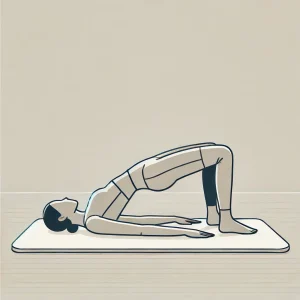
How to Get a Flat Stomach After Pregnancy? I want to share my honest experiences as a mother of two children in this article and pass on some truths about “Getting a Flat Stomach After Pregnancy” to you.
As a nutrition scientist and epidemiologist, I’ve delved deeply into the realm of postpartum recovery and specifically, how to regain a flat stomach after pregnancy since the births of my two children in 2019 and 2023. In this article, I want to share my honest experiences as a mother and shed light on some truths about achieving a flat stomach post-pregnancy.
First and foremost, tackling postpartum recovery, including flattening the stomach, requires a strategic, step-by-step approach and a clear, individualized plan. Simply attending a six-week postnatal recovery class isn’t sufficient. From my experience, here’s something rarely mentioned elsewhere: postpartum recovery and achieving a flat stomach demand significant effort.
Long-term success often comes to those who put in the most work, not necessarily those who were slender before pregnancy!
Exercises Immediately After Birth: 5 Helpful Tips
Here, I’ll outline exercises you can begin immediately after giving birth. During the postpartum period, it’s crucial for the body to relearn how to engage certain muscle groups. An issue often overlooked is the significant stretching of the transverse abdominal muscles during pregnancy, inhibiting their activation. Hence, post-birth, the brain must relearn to engage these muscles to allow for contraction.
I’ll show you how the body relearns to engage the abdominal muscles.
Tip 1: Drawing in the Belly Button Strengthens the Transverse Abdominal Muscle

If you aim to regain a flat stomach after pregnancy, activating the transverse abdominal muscle is crucial for success. The simplest way to retrain the brain to engage this muscle is by drawing in the belly button. You can start this exercise a few days after giving birth, once you feel physically capable. Try to do this as often as possible throughout the day. Initially, you may not feel the belly button movement, which is normal. Just keep at it. It may take weeks or even months for your body to fully engage the transverse abdominal muscle. However, persistence can lead to significant results. Moreover, this exercise requires minimal time investment.
Other Benefits of a Strong Transverse Muscle:
- Improved Posture: A strong transverse muscle aids in stabilizing the spine and pelvis, leading to better posture and preventing back pain.
- Flatter Stomach: Strengthening the transverse muscle can tighten and flatten the abdomen, as it helps hold the abdominal organs and stabilize the stomach.
- Reduction in Incontinence: A strong transverse muscle can improve bladder control and reduce post-pregnancy incontinence issues.
- Enhanced Athletic Performance: A strong core, including the transverse muscle, is crucial for many sports and daily movements, enhancing overall athletic performance.
Tip 2: Pelvic Floor Training Post-Birth
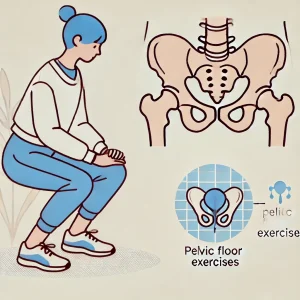
The pelvic floor muscles undergo significant strain during pregnancy and childbirth. The weight of the growing baby and the stress during delivery can weaken and stretch the pelvic floor. This can lead to issues like urinary incontinence, pelvic organ prolapse, and sexual dysfunction. To prevent or minimize these problems, targeted pelvic floor exercises are essential.
While it was previously recommended to start pelvic floor exercises a few weeks after birth to allow for recovery, many experts now advise starting shortly after birth. This early intervention offers numerous advantages:
- Accelerated Recovery: Early pelvic floor exercises can speed up tissue regeneration and muscle strengthening, reducing postnatal issues like pelvic pain and bladder control problems.
- Prevention of Long-Term Complications: Starting pelvic floor exercises early can help avoid long-term issues. Strong pelvic floor muscles reduce the risk of urinary incontinence, pelvic organ prolapse, and other problems associated with weakened pelvic floor muscles.
- Improved Sexual Health: A strong pelvic floor can enhance sexual health and satisfaction. Strengthening these muscles can increase sensation during intercourse, leading to a better sexual experience.
- Psychological Well-Being: Restoring pelvic floor muscles can boost a mother’s self-esteem and psychological well-being. Taking proactive steps to improve health can enhance self-worth and prevent postnatal depression.
- Integration into Daily Life: Early pelvic floor exercises can be easily incorporated into daily life, requiring no special equipment and can be discreetly performed. Mothers can do them while caring for their newborn or during other daily activities.
However, it’s important to note that not all women can or should start pelvic floor exercises immediately after birth. Especially in cases of birth complications or persistent issues, consulting with a healthcare professional is essential.
In conclusion, current evidence indicates that starting pelvic floor exercises early offers many benefits. It doesn’t need to be complicated—simply engaging the pelvic floor muscles periodically can make a difference.
Tip 3: Reduce Rectus Diastasis
What is rectus diastasis anyway?
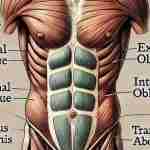
Rectus diastasis occurs when the straight abdominal muscles, also known as rectus abdominis muscles, separate during pregnancy and do not return to their normal position immediately after birth. This condition is present in most women after giving birth and can lead to problems such as a weak core and back pain if not properly treated.
If rectus diastasis is left untreated, not only aesthetic but also serious health consequences can occur, including:
- Weak core: Rectus diastasis results in a weakening of the straight abdominal muscles (rectus abdominis). If these muscles do not function properly, it can lead to a general weakness in the core area, which in turn can cause back pain and poor posture.
- Increased back pain: Untreated rectus diastasis can lead to chronic back pain as the abdominal muscles are no longer able to effectively stabilize the spine. This can significantly impair quality of life and limit daily activities.
- Hernia formation: Untreated rectus diastasis can increase the risk of hernia formation, especially in the abdominal wall. Hernias occur when organs or tissue protrude through a weakness in the abdominal wall, leading to pain, swelling, and sometimes serious complications requiring surgical intervention.
- Impairment of pelvic floor function: The pelvic floor is also affected by rectus diastasis, as the abdominal muscles are closely connected to the pelvic floor. Untreated rectus diastasis can further weaken the pelvic floor, leading to problems such as urinary incontinence, uterine or bowel prolapse, and sexual dysfunction.
- Aesthetic problems: Pronounced rectus diastasis can also cause aesthetic problems, such as a “beer belly” or a “pregnancy belly” that persists even after childbirth. This can negatively impact self-esteem and body image.
To avoid all these problems, it is very important to start early, just a few days after childbirth. By pulling in the belly button and contracting the abdominal muscles towards the navel, you can gradually regain a sense of your core. It may take several weeks of daily practice to regain a proper sense of muscle control, so it’s important to stay consistent.
Tip 4: Absolutely Avoid!
There are some things that must be avoided after childbirth.
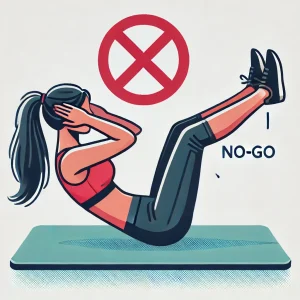
It is crucial to avoid certain exercises and movements to prevent strain on the abdominal muscles and pelvic floor, thus avoiding exacerbating rectus diastasis. In particular, exercises that increase intra-abdominal pressure, such as sit-ups, and movements that heavily strain the abdomen, such as getting up using the abdomen, should be avoided. It is also important to avoid heavy lifting.
Why Sit-ups and Similar Exercises Must Be Avoided
Sit-ups and similar exercises that require strong contraction of the abdominal muscles should be avoided after childbirth. These exercises increase pressure in the abdominal cavity and can worsen rectus diastasis instead of improving it. Furthermore, sit-ups strain the pelvic floor and can lead to excessive stretching, causing further issues.
Movements that Increase Intra-Abdominal Pressure, such as Getting Up using the Abdomen
In addition to sit-ups, movements that increase intra-abdominal pressure, such as getting up using the abdomen or lifting heavy objects, should also be avoided. These movements can further strain the weakened abdominal area and delay healing after childbirth.
Avoiding Heavy Lifting and do “Proper” Lifting (with Good Posture and Straight Back)
Tip 5: Don’t Rush to Resume Activities Too Soon
Here, I want to share my own experiences after the births of my two children.
After my daughter was born in 2019, I knew little about postpartum recovery. She was very demanding, needing to be held constantly and having trouble sleeping, which left me exhausted and sleep-deprived. I turned to sweets and cookies, gaining 6 kg post-pregnancy, and felt uncomfortable in my body.
I joined a postpartum recovery course but struggled to focus while caring for my baby, and I neglected exercises at home. Consequently, I made no progress. After seven months, I tried sit-ups and push-ups, which led to severe lower back pain and a major herniated disc.
For months, I suffered from back and leg pain, unable to sit or stand for long. Thankfully, a gymnastics routine eventually relieved my pain, and I switched to a standing desk at work.
Three years later, during my second pregnancy, I exercised daily to strengthen my core and avoided back pain throughout. Post-birth, I was cautious to prevent issues. I began engaging my core and pelvic floor muscles days after delivery. It took weeks to regain bladder sensation and core strength, but eventually, I avoided further back problems.
Postpartum Abdominal Rehabilitation: 6-8 Weeks After Birth with Focus on Abdominal Muscles: 4 Helpful Exercises
f, as described above, you began shortly after birth to draw in your navel and tense your pelvic floor, allowing the brain to reengage these muscles, then you might have regained good control of these transverse abdominal muscles 6-8 weeks after birth.
You should definitely only continue with the following exercises when you can already perform abdominal tension. Always start by practicing this abdominal tension by drawing in your navel as often as possible throughout the day and tensing the pelvic floor. If you start this several months after giving birth, that’s no problem either. You should start by practicing this firm abdominal tension before you move on to further exercises. This is always the first and most important step. You must practice this for several weeks until you can really perform a firm abdominal contraction. Only this will help you regain a flat stomach.
Once you master the firm abdominal tension, you can proceed with postpartum recovery exercises. Here you can also train the lower oblique abdominal muscles.
If you have mastered firm abdominal tension, you can now continue with postpartum exercises. Here you can also train the lower oblique abdominal muscles.
Exercises for postpartum recovery
Pelvic Floor Exercises (Kegel Exercises)
Instructions: Stand or lie down comfortably. Tighten your pelvic floor muscles as if you are trying to stop the flow of urine. Hold the tension for a few seconds and then slowly release it. Repeat this 10-15 times.

- Bridges
- Instructions: Lie on your back with your knees bent and feet flat on the floor. Slowly lift your pelvis until your body forms a straight line, then lower it back down. 10-15 repetitions.

- Side Leg Raises:
- Instructions: Lie on your side, support your head with your arm, and slowly lift and lower the top leg. This exercise strengthens the oblique abdominal muscles and hips. 10-15 repetitions per side.
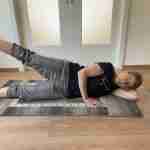
Here is a guide for possible exercises: Daily Guide.
The articles on health topics do not replace a visit to the doctor. You can find more information here.

Sonja ist Ernährungswissenschaftlerin und promovierte Epidemiologin mit langjähriger Erfahrung in der Gesundheitsforschung. Seit der Geburt ihrer beiden Kinder 2019 und 2023 beschäftigt sie sich intensiv mit dem Thema Rückbildung und der Thematik, wie man wieder einen gesunden und schönen Körper mit stabiler Mitte nach der Schwangerschaft bekommen kann. Sie möchte Euch helfen, nach der Schwangerschaft wieder fit zu werden!